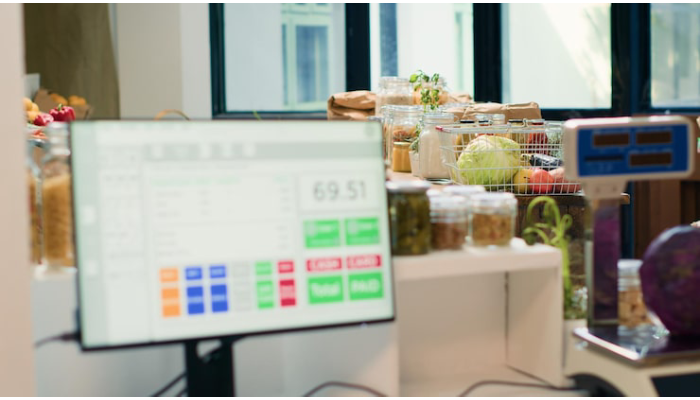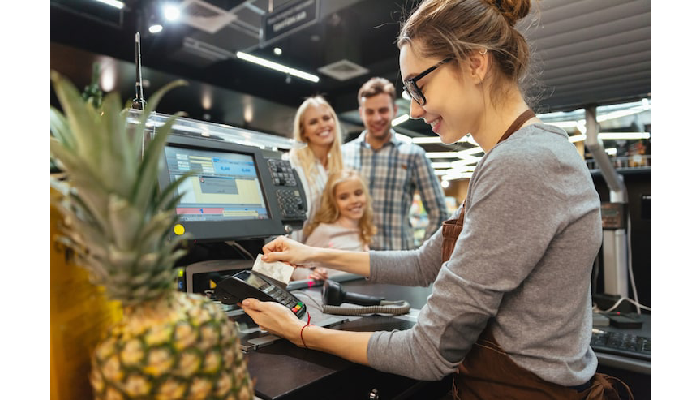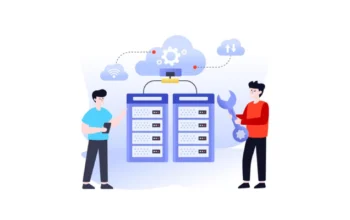In 2025, a POS system for retail store is no longer an optional nice-to-have — it has become a fundamental backbone of efficient, competitive retail operations. As customer expectations rise, omnichannel competition intensifies, and data-driven decision making becomes essential, a modern POS (point-of-sale) system delivers capabilities well beyond simply ringing up sales. Below are the top 7 reasons every retail store should adopt (or upgrade to) a contemporary POS system in 2025.
1. Real-Time, Accurate Inventory Management
One of the most compelling reasons a retail store needs a POS system for retail store is because modern systems maintain real-time inventory tracking. Whenever a product is scanned and sold, the system automatically updates stock counts across all channels (in-store, online, or multiple outlets). This minimizes stockouts, overstocking, and data mismatches.
Additionally, many POS platforms now incorporate predictive analytics or AI-driven demand forecasting to suggest restocks before shortages occur. Without a POS system, many retailers still depend on manual stock counts, spreadsheets, or delayed updates — a recipe for errors and lost sales.

2. Unified Omnichannel Sales & Channel Integration
Today’s shoppers move fluidly between online and offline worlds. A retail shop needs a pos system for retail store that unifies all sales channels — physical stores, e-commerce, mobile apps, pick-up-in-store, and more.
With such integration, inventory, orders, and customer data sync across channels, preventing problems like selling an item online that’s already sold in-store, or vice versa.Moreover, unified reporting gives you a holistic view of total revenue and performance, rather than siloed data. Without that integration, growth becomes chaotic and fragmentation hinders decision making.
3. Faster Checkout & Enhanced Customer Experience
Speed at the checkout counter is a critical part of the in-store experience. A POS system accelerates transactions — scanning barcodes, applying discounts, processing returns, and reconciling payments — in a few taps.
Modern POS systems also support a wide range of payment methods: contactless cards, mobile wallets (e.g. Apple Pay, Google Pay), QR codes, “Buy Now, Pay Later” options, and more. This flexibility meets rising customer expectations for convenience and choice. Some POS systems even support offline mode so transactions can still go through in case of temporary internet outages.
A swift, seamless checkout experience increases customer satisfaction, reduces queue frustration, and can meaningfully reduce cart abandonment.
4. Deeper Insights via Analytics & Reporting
Running a retail store without data is like driving blind. A powerful pos system for retail store converts every transaction into structured data — allowing you to analyze trends, margins, top-selling SKUs, underperformers, peak hours, staff performance, and more.
You can generate daily, weekly, or monthly reports promptly — instead of waiting for manual reconciliation. Some POS tools even provide dashboards, alerts, and visual insights for non-technical users. As your business scales, these insights become critical to optimizing pricing, promotions, margins, and expansion.
5. Customer Relationship Management (CRM) & Loyalty Programs
A POS system is no longer just a checkout tool — it can double as a CRM engine. By capturing customer data (e.g. purchase history, preferences, contact info), you can deliver personalized offers, segment marketing campaigns, reward repeat customers, and run targeted promotions.
For example, when a known loyalty customer walks in, the POS might flag a custom discount, or automatically apply reward points. Some systems even integrate with email, SMS, or mobile apps so customers feel recognized and valued.
Without this CRM integration, small and medium retailers lose out on valuable customer retention and upsell potential.
6. Enhanced Security, Compliance & Loss Prevention
Retail stores must protect sensitive customer payment data and maintain compliance with standards like PCI DSS. A modern POS system supports end-to-end encryption, tokenization, secure payment flows, and audit trails to reduce the risk of data breaches or fraud.
Moreover, POS systems help with loss prevention by tracking voids, discounts, refunds, or suspicious transactions tied to specific staff IDs. Managers can audit user-level logs to identify anomalies.
In many jurisdictions, fiscal or tax authorities now require rigorous reporting or “fiscalization” standards (digital signatures on receipts, transaction record-keeping, real-time reporting) — compliance that only a capable POS system can reliably deliver.
Without such protections, retailers risk data breaches, regulatory penalties, or theft losses.
7. Scalability, Flexibility & Reduced Operational Costs
As your retail store (or stores) expand, a POS system scales with you. You can add registers, users, branches, or even integrate new sales channels without rebuilding your tech stack. Many POS systems in 2025 operate on cloud-based or SaaS models, meaning lower upfront hardware costs and easier remote deployment.
You also reduce operational overhead: fewer manual data entry errors, less reconciliation between separate systems (e.g. payment processor, inventory tracker, accounting), and lower IT maintenance. In the long run, improved efficiency often yields a positive return on investment.
Additionally, many POS vendors offer modular add-ons: e-commerce integration, employee scheduling, advanced analytics, and APIs to connect other business tools. This modular flexibility avoids overpaying for unused features.
Bonus: Trends to Factor In (2025 and Beyond)
While not one of the “core” top 7, it’s useful to note some accelerating trends influencing POS systems in 2025:
- Mobile POS (mPOS): Your cashiers can carry tablets or phones and ring up sales anywhere in the store, reducing bottlenecks.
- Self-checkout & unattended retail: Some stores deploy kiosks or scan-and-go workflows, with the POS backend orchestrating the process.
- AI-driven recommendations: Integration of product suggestions or promotions at POS based on purchase history is rising.
- Contactless & alternative payments: Beyond NFC cards, POS systems increasingly support QR, BNPL, and even crypto wallets (where legal).
- Edge / offline functionality: Even when connectivity drops, the POS must continue operating and sync later.
These trends only underscore how the role of a pos system for retail store continues to evolve from transactional tool to central operational hub.
Implementation Tips & Considerations
To get the most value from a POS rollout, consider the following:
- Select deployment model wisely: cloud-based vs on-premises depends on your connectivity, control needs, and data sensitivity.
- Ensure hardware compatibility: barcode scanners, receipt printers, cash drawers, tablets — your POS should support your existing or affordable hardware.
- Plan staff training and change management: Your staff must adopt it smoothly; choose an intuitive system and invest in onboarding.
- Data migration & syncing: If moving from spreadsheets or legacy systems, plan careful migration to avoid data loss.
- Security and backup policies: Regular backups, access controls, and encryption must be enforced.
- Vendor support & roadmap: Choose a vendor with good support, regular updates, and a roadmap aligned with your growth plans.
Conclusion
A pos system for retail store in 2025 is far more than a digital cash register — it is your command center for inventory, analytics, customer relationships, and multi-channel operations. For retail stores aiming to compete, scale, and create seamless customer experiences, ignoring or underinvesting in a modern POS system is increasingly a disadvantage.




